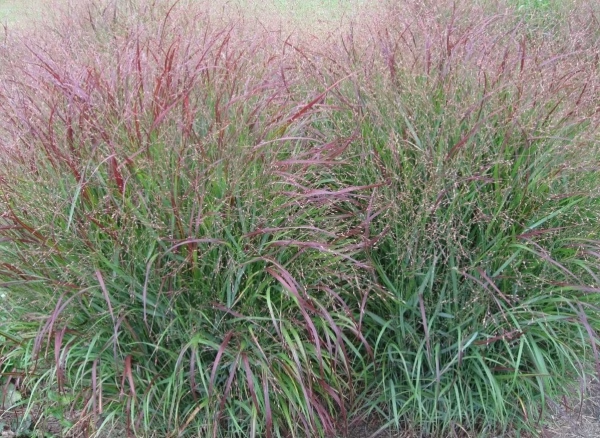
Switchgrass
Botanical Name
:
Panicum virgatum
Plant Type
:
Perennial warm-season bunchgrass
Seasons
:
Grows in spring and summer, flowers in late summer to early fall
Sun Level
:
Full sun (6+ hours), tolerates light shade but grows best in full sun
Ideal Soil Temperature for Planting
:
60–65°F (16–18°C)
Soil Type
:
Adaptable to a variety of soils, including sandy, loamy, and clay but with good drainage
Hardiness Zones
:
4–9 (USDA)
Germination
:
14–28 days; benefits from cold stratification for better germination rates
P.H. Level
:
5.5–7.5 (acidic to neutral)
Water/Irrigation
:
Once established, switchgrass is very drought-tolerant. Water regularly during the first year to develop deep root systems. After that, supplemental watering is rarely needed
Fertilization
:
Can grow in nutrient-poor soils, but light fertilization in spring can enhance growth
Habit
:
Upright, clumping grass with stiff stems and arching foliage
Propagation
:
Seed is the most common method although they can also be propagated by division
Final Plant Height
:
36–72 inches
Spread
:
Clumps gradually expand. Some cultivars can be spread by rhizomes
Spacing
:
18–36 inches apart
Flowers
:
Airy, pink-tinged flower spikes. The seeds sometimes take on a pink or dull-purple tinge and turn golden brown in the fall
Attracts
:
Birds (seeds in winter), butterflies, and other insects
Uses
:
Ornamental landscaping, prairie restoration, erosion control, biofuel production, livestock forage
Companions
:
Little Bluestem, Indian Grass, Coneflowers, Black-eyed Susan, Asters
Pruning
:
Cut back in early spring before new growth emerges
Toxicity
:
Non-toxic to humans and pets
Pests
:
Generally pest-resistant but may attract grasshoppers
Diseases
:
Highly resistant to diseases, though rust or leaf spots may occur in wet conditions
Botanical Name
:
Panicum virgatum
Plant Type
:
Perennial warm-season bunchgrass
Seasons
:
Grows in spring and summer, flowers in late summer to early fall
Sun Level
:
Full sun (6+ hours), tolerates light shade but grows best in full sun
Ideal Soil Temperature for Planting
:
60–65°F (16–18°C)
Soil Type
:
Adaptable to a variety of soils, including sandy, loamy, and clay but with good drainage
Hardiness Zones
:
4–9 (USDA)
Germination
:
14–28 days; benefits from cold stratification for better germination rates
P.H. Level
:
5.5–7.5 (acidic to neutral)
Water/Irrigation
:
Once established, switchgrass is very drought-tolerant. Water regularly during the first year to develop deep root systems. After that, supplemental watering is rarely needed
Fertilization
:
Can grow in nutrient-poor soils, but light fertilization in spring can enhance growth
Habit
:
Upright, clumping grass with stiff stems and arching foliage
Propagation
:
Seed is the most common method although they can also be propagated by division
Final Plant Height
:
36–72 inches
Spread
:
Clumps gradually expand. Some cultivars can be spread by rhizomes
Spacing
:
18–36 inches apart
Flowers
:
Airy, pink-tinged flower spikes. The seeds sometimes take on a pink or dull-purple tinge and turn golden brown in the fall
Attracts
:
Birds (seeds in winter), butterflies, and other insects
Uses
:
Ornamental landscaping, prairie restoration, erosion control, biofuel production, livestock forage
Companions
:
Little Bluestem, Indian Grass, Coneflowers, Black-eyed Susan, Asters
Pruning
:
Cut back in early spring before new growth emerges
Toxicity
:
Non-toxic to humans and pets
Pests
:
Generally pest-resistant but may attract grasshoppers
Diseases
:
Highly resistant to diseases, though rust or leaf spots may occur in wet conditions
Written by Salome Wapukha – https://www.linkedin.com/in/salome-wapukha-556700193/

